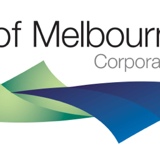Information
-
Document No.
-
Audit Title
-
Client / Site
-
Conducted on
-
Prepared by
More than one auditor
-
Additional auditors
-
Health and Safety Management Plan (HSMP) available on site to all employees
-
Health and Safety Coordination Plan (HSCP) available on site to all employees
-
OHS Management System (OHSMS) in use by the Contractor. OHSMS defines OHS responsibilites and includes processes for the communication of OHS matters, hazard identification and risk management, site safety rules, training and induction, mobile plant management, emergency response, traffic management and sub-contractor management. TIP: Sight the Contractors OHSMS contents page
-
Safe Work Method Statements (SWMS) in place for all high risk construction work (eg: use of mobile plant, working at heights, excavations greater than 1.5m, confined space, demolition)
-
SWMS are specific to the task (not generic).
-
Onsite supervision provided for workers
-
For trenching (1.5 metres or deeper), has the Supervisor successfully<br>completed install primary ground support or trench<br>shoring and safety training or hold a mine manager’s<br>(trenches) permit?
-
All workers hold a current white card (construction induction training)
-
All workers have a PCP/Contractor induction card on their person
-
Labour Hire providers are intergrated into / trained in the Contractors OHSMS and HSMP
-
PCP minimum PPE requirements complied with by all site personnel (minimum PPE: hard hat, protective glasses, long sleeve hi vis shirt, long leg pants, steel cap boots)
-
Additional PPE in use that is appropriate to the task (Eg: earplugs, face shield, gloves)
-
Good housekeeping maintained (eg: tools and equipment stored correctly, access/egress not obstructed)
-
Employess conducting high risk work hold a current WorkSafe high risk work licence (eg rigging, mobile cranes, working at height)
-
Powered equipment is in safe working condition (Eg: hand held power tools fitted with guarding)
-
Powered equipment is tested and tagged correctly (Red=Dec-Jan, Green=Mar-May, Blue=Jun-Aug, Yellow=Sep-Nov)
-
First Aid and site facilities provided
-
Contractor OHS Manager on site
-
Emergency response processes known by workers (regular drills conducted)
-
Effective communication between mobile plant operators and spotters (verbal and/or non-verbal)
-
No evidence of personal electronic devices being used for personal reasons or in use when close to mobile plant, traffic or a site transit route (Eg: mobile phones, MP3 players)
-
Traffic Management conditions complied with (Eg: speed limits, seatbelts, designated routes)
-
Visual and audible warning devices fitted to all vehicles and mobile plant (beacons and reversing alarms)
-
Exclusion areas / safety zones established and marked around mobile plant
-
Mobile plant manuals and services books up to date and kept in operators cabin
-
-
Mobile plant 'blind spots' kept clear at all times
-
Warning and safety signs/stickers/<br>decals are legible, in good condition and correctly positioned<br>on equipment.
-
Inspection, maintenance and repair of plant maintained in accordance with manufacturers specifications
-
No go zone conditions adhered to for overhaed and underground power sources (No go zone for powerlines = 6.4 metres, No go zone for towers = 8 metres)
-
Earthmoving equipment used to lift loads has hose<br>burst protection valves fitted on critical hydraulic cylinders<br>(if the equipment has a rated capacity over one tonne).
-
All lifting equipment (chains, slings etc) inspected and tagged annually as a minimum
-
Telehandlers fitted with correct attachments (as per manufactures requirements)
-
Trench shields with guard rails fitted around excavations that pose risk of personnel falling in.
-
WorkSafe notified in writing at least three days<br>before work starts on a shaft (two metres or deeper) or<br>a trench (1.5 metres or deeper)
-
Excavations over 1 metre benched or battered
-
Confined Space permit in place for work conducted in trenches and pits where thers is limited means of entry/exit, risk of engulfment or poor ventilation
-
Oxygen cylinders stored at least 3 metres from<br>fuel gas cylinders, unless separated by a firewall.
-
All cylinders stored and secured in an upright position and if<br>filled with flammable gas, at least five metres from any<br>source of ignition.
Action required?
-
Action
-
Allocated to
-
Action due
-
Signed PoMC Representative:
-
Signed Principal Contractor Representative (optional):














